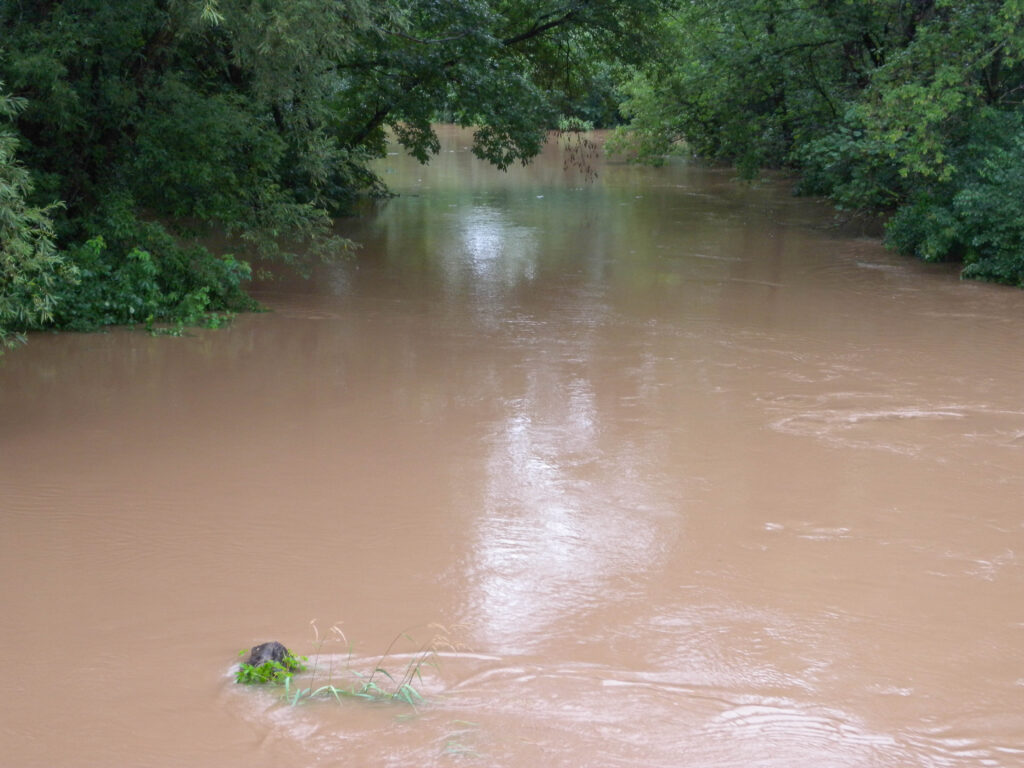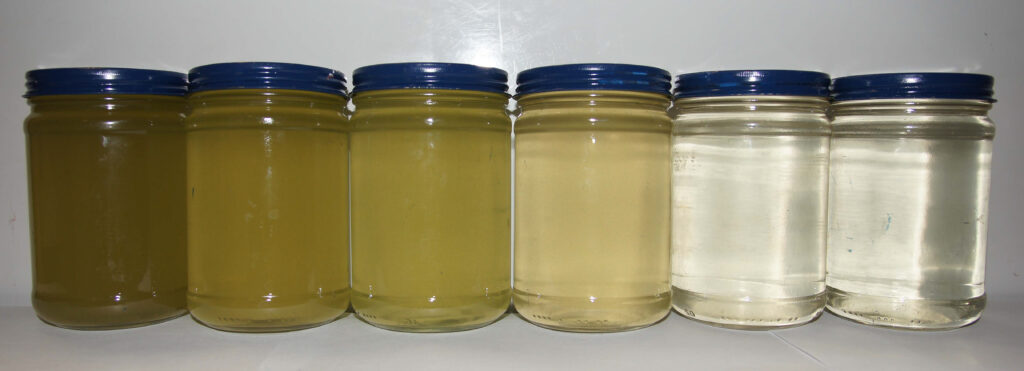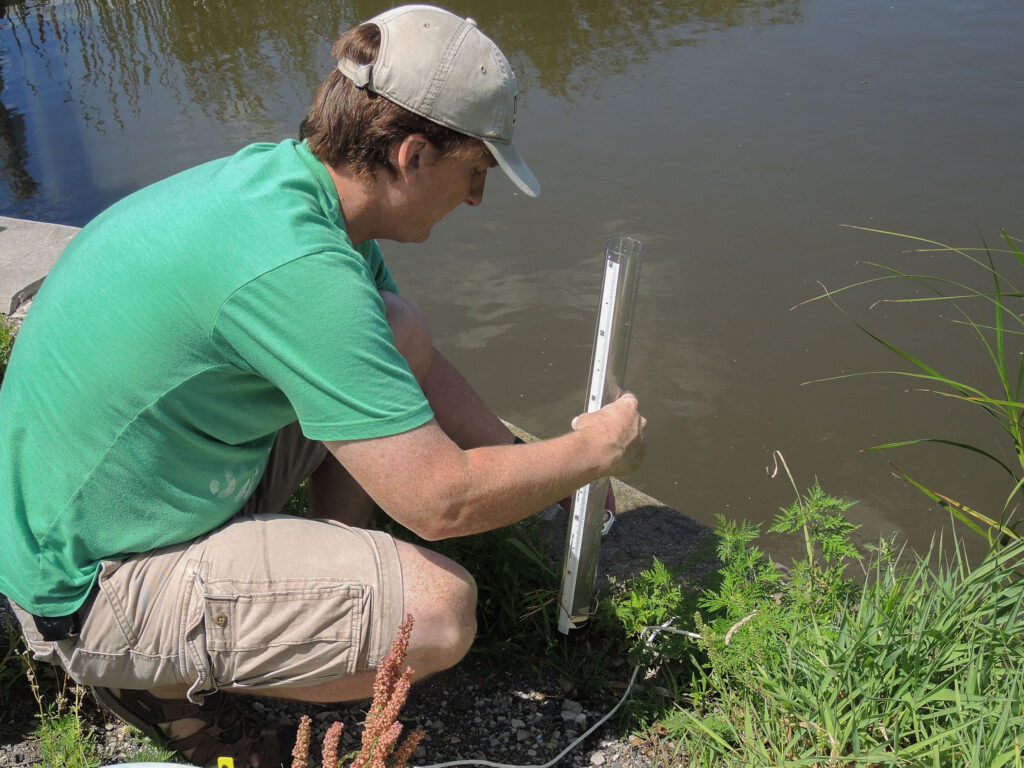For many lakes and streams, turbidity is the most important environmental issue affecting individual water bodies. But what is turbidity, and where does it come from?
Turbidity is a measure of the particles suspended in the water that absorb or scatter light. Examples of turbidity-causing particles are: industrial pollution, suspended inorganic and organic soil, phytoplankton (algae), and zooplankton.

Causes of Turbidity
Some turbidity is natural; if it weren’t for some particles in the water, there would be almost no aquatic life. However, turbidity is often excessive, but where does this extra turbidity come from?
Wave-caused resuspension of sediment is produced when the energy from waves disturbs the bottom of lakes and rivers. Shallow lakes and reservoirs are most susceptible to this type of disturbance. Resuspension of sediment can also be caused by prop-wash from recreational boating or commercial shipping.
Activity of bottom-feeding fish. Fish that feed in the bottom sediments are a natural, healthy part of the ecosystem. Bottom-feeding fish dig up sediment as they look for their food: plants, invertebrates, or decaying organic matter. A small population of native white suckers is not going to cause problems, but when the invasive common carp population becomes excessive, they continually disturb the bottom, releasing both sediment particles and dissolved nutrients that will feed algae growth. During spawning, common carp and other species can increase turbidity on their spawning grounds.
Algal Growth One of the main problems is excessive algal growth in nutrient-rich waters. Phytoplankton needs nutrients to grow. If a water body has excessive phosphorus and nitrogen, algae can quickly grow to levels that can block out the light and reduce the amount of light to rooted aquatic plants. Large algae populations produce excessive amounts of oxygen during the day and deplete the oxygen supply at night. Zooplankton living in the water column also absorb light, leading to turbidity. We often consider them beneficial because they consume algae and are a link in the food chain that leads to fish and wildlife that people enjoy.

Erosion from the landscape. The countryside naturally erodes, and soil makes its way to the sea, but the ground disturbed by agriculture and construction practices dramatically accelerates the process. Particles of soil on exposed farm fields are picked up by wind and water and carried into lakes and rivers. At unprotected construction sites, rain and snowmelt also wash these solids into surface waters. Often these particles transport nutrient pollution that will lead to excessive algal growth. The particles can also contain chemical pollutants that can harm aquatic environments. Stream banks and lakeshores are always eroding and forming, but land use along the shore, and waves from the wakes of boats speeds erosion of the shores, adding to the water body’s turbidity. Rip-rap is often used to reduce shoreline erosion.

Feedback Loops
Turbidity breeds more turbidity in a cascading feedback loop. Turbid conditions reduce aquatic plant life. Aquatic plants promote clear water conditions by filtering out nutrients and holding in sediment. As aquatic plants are lost, fewer nutrients are taken out of the water and are left over to fuel algae blooms. Without the rooted plants, the bottom sediments are easily disturbed by waves adding to turbidity. The loss of plants and increased turbidity creates conditions that favor bottom-feeding rough fish. Their increased population disturbs even more sediment and harms remaining aquatic plants. This cascading effect can turn a lake or river system into a turbid nightmare. It can be difficult to reverse the feedback loop, and sometimes it is economically or socially impossible to fix. It is crucial to prevent lakes and rivers from going into a turbid state in the first place.
Measuring Turbidity
Several tools can be used to measure the turbidity of lakes and streams. The most commonly used is the Secchi disk, because of its ease of use and it is inexpensive. A Secchi disk is a weighted circle that hangs off a rope and is divided into four alternating white and black parts. The disk is lowered into the water column until it disappears from view. When it disappears, the depth is noted, then the disk is brought back up until it can be seen again, depth noted, and then averaged with the first one. The accuracy of the disk is affected by cloud cover, the angle of the sun, and the waves on the surface. The Secchi disk fails in areas where it is shallow, and the disk hits the bottom before it disappears from view.

Although Secchi disk readings can be adversely affected by a number of factors it is still highly useful, because they are a standard used throughout the world. They are also helpful because they are economical, so the number of readers and readings can be increased, smoothing out the errors over time.
A turbidity tube works in the same way as a Secchi disk except that water from the lake or river is poured into a long tube with a small disk affixed to the bottom. Water is let out of the tube until the disk can be seen. If the water is very clear and the tube isn’t long enough, then an accurate reading cannot be made.


A special turbidity meter can also be used. A sample of water is taken from the water body and put in a device that passes light through the sample. The machine measures the light lost as it passes through the sample. Turbidity meters have to be calibrated with turbidity standard solutions. These meters eliminate the inaccuracies caused by changing environmental conditions.

Another way to measure turbidity is to use a light meter. The meter is calibrated at the water’s surface, where it can correct for cloudy conditions. Then the light is measured at several depths. Waves and the angle of the sun can still throw off readings.
Conclusion
Turbidity is one of the most important factors facing the health of aquatic systems. Some large rivers, such as the Amazon River, are naturally turbid, and life has evolved around those conditions. Turbidity can degrade through feedback loops that are very hard to break and reverse. Since it is so difficult to break these loops, it is crucial to never get to the point of a turbid state in the first place.
